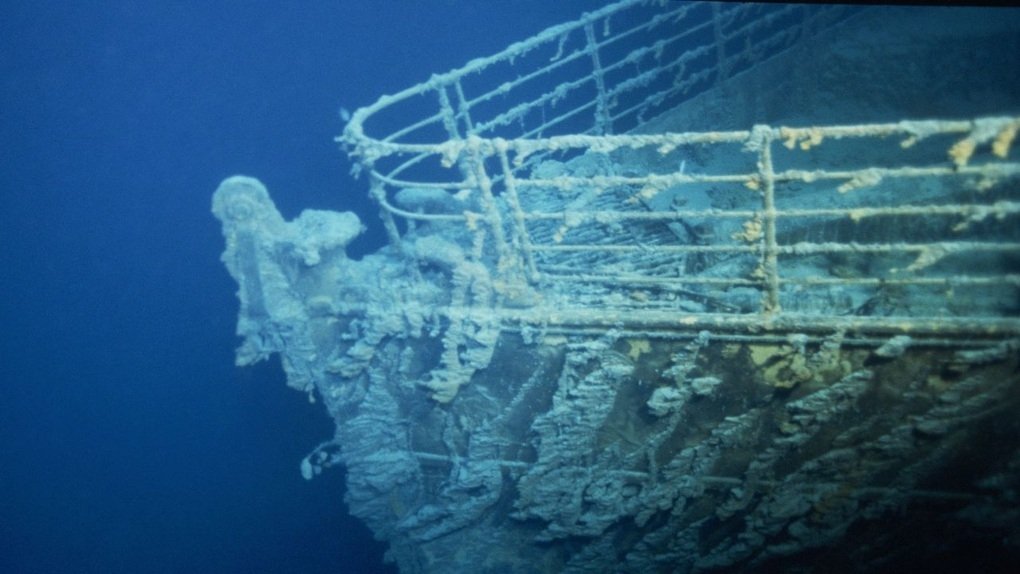
(Dan Tri) – 110 years after the Titanic sank in a terrible accident, experts and divers have made a new surprising discovery at the wreck site deep at the bottom of the Atlantic Ocean.
Part of the Titanic’s wreck lies on the ocean floor (Photo: Getty).
The wreck of the Titanic is currently located at a depth of 4,000 meters under the North Atlantic Ocean and is slowly decomposing, after it sank in 1912 during its first Atlantic crossing.
According to CNN, a mysterious streak of light appearing on sonar waves, discovered about 26 years ago, has revealed more mysteries at the scene near the Titanic’s wreck than previously thought.
In 1996, diver Paul Henry Nargeolet, one of the few divers with the most discoveries of the Titanic’s wreck in the world, recorded a mysterious streak of light on the sonar scanner screen near the ship’s wreck location.
However, in the decades since then, no one has been able to determine what that streak of light was.
And during an expedition to the Titanic shipwreck organized by the company OceanGate earlier this year, diver Nargeolet and other researchers went to the previously recorded location of this light streak.
Due to the magnitude of the streak of light, Mr. Nargeolet believed it could be another sunken ship.
However, to his surprise, what he found was a coral reef at the bottom of the sea containing many marine creatures such as lobsters, deep-sea fish, sponges and some species of coral that can number up to thousands.
In other words, the mysterious blip belongs to a previously unknown coral reef.
`It’s biologically fascinating,` said Murray Roberts, a professor of biology and applied marine biology at the University of Edinburgh in Scotland and one of the researchers on the expedition.
`Nargeolet did really important scientific work. He thought it was a sunken ship but it turns out that to me, this discovery was even more surprising than a sunken ship,` Professor Roberts added.
Mr. Nargeolet was very excited about this discovery, saying: `I had been looking for the opportunity to explore this large object that appeared on sonar a long time ago. It was a surprise to explore this area, and find it hidden
The researchers are currently working to analyze images and videos taken of the reef during dives and plan to share their findings to improve understanding of life on the ocean floor.
Professor Roberts also hopes to link this discovery to a wider Atlantic ecosystem project he is leading, called `iAtlantic`, which will enable further research and protection of the ecosystem.
There is another sonar flare near the wreck of the Titanic that Nargeolet hopes to identify during a future expedition.
The super-ship Titanic, built in 1909 and launched in 1912, was known as the `unsinkable ship`.
More than 1,500 people were killed, marking the most serious maritime accident in peacetime.








